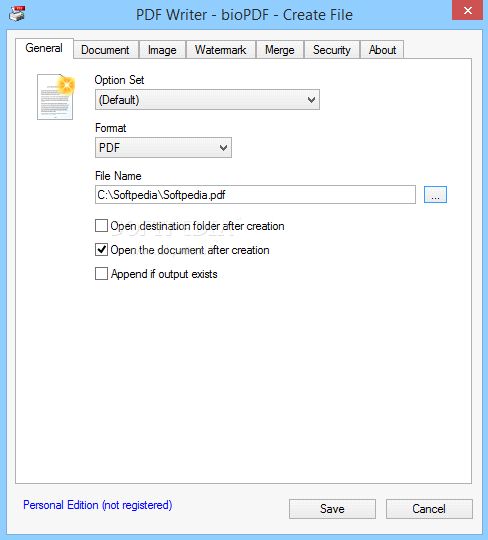

The stderr output of the backend can be prefixed e.g.
#IS CUPS PDF FOR MAC SAAFE HOW TO#
When the backend is called as usual by the cupsd, the normal stderr output of the backend is forwarded to /var/log/cups/error_log if there is "LogLevel debug" set in /etc/cups/nf (see the section how to "Get CUPS debug messages if it does not work" in SDB:CUPS in a Nutshell). Usually the second field (here only "mybackend") is a specific device URI, see "The Backends" at SDB:CUPS in a Nutshell. For example when a backend /usr/lib/cups/backend/mybackend is called without arguments it would have to output at least:ĭirect mybackend "Unknown" "no device info" When the backend is called without an argument, it must output on stdout "device discovery" information. Instead the backend must implement whatever is needed to send it directly to the printer device or to whatever other recipient up to any external destination (compare the section about "Allow printer admin tasks for a normal user" in SDB:CUPS in a Nutshell). The backend must not send its output data via stdout. The backend gets its input data either via stdin or it must read its input data from a file when the backend was called with a filename argument as argv. See the section "The Backends" in SDB:CUPS in a Nutshell. Usually, the backend gets printer-specific data as input and sends it to the printer device. You should have a basic knowledge of the printing system and be well acquainted with CUPS (see SDB:CUPS in a Nutshell), bash scripts, and common command-line tools. You want to use a custom backend to print with CUPS.

3.1 A careless backend for a single USB printer.You may get many lubricating paper pieces by printing a small PDF file. If someone sends on linux a non PostScript file to the raw queue the printer will print this file as text. ipps:///printers/hp1_rawĪ small risk remains. In MacOS use the RAW printer URI as destination, e.g. if your printer is named 'hp1' add 'hp1_raw' as second printer. But choose Raw as Maker and Model for the printer.
#IS CUPS PDF FOR MAC SAAFE INSTALL#
Keep the description and model settings and save.Ģ) Install a RAW printer on the linux server with the same target URI as the HP printer. The target URI contains the previous URI. Choose 'Modify Printer', authenticate and select the IPP or IPPS printing protocol. Call your browser (enable the interface in terminal with 'cupsctl WebInterface=yes'). To the cups URI in your MacOS cups server. banner) the output from the filter is identical to the MacOS output. The filter send the source file with his own header and footer to the printer. The cups server decompress the output and pipe it to the hpps filter. We found two workarounds for the problem:ġ) Send the output from MacOS compressed as gzip to the linux server. The hpps filter script is called with an empty file and generates an empty page. The problem is the PostScript output from the MacOS which seems to be ignored from cups under linux. On linux the filter script /usr/lib/cups/filter/hpps is called to generate the output for most HP laser printers. The cups server on the linux machine parses the PostScript input and use his own settings to regenerate the output. For modern HP laser printers cups generates PostScript output but with some special settings for the target printer. MacOS machines use their own cups server.


 0 kommentar(er)
0 kommentar(er)
